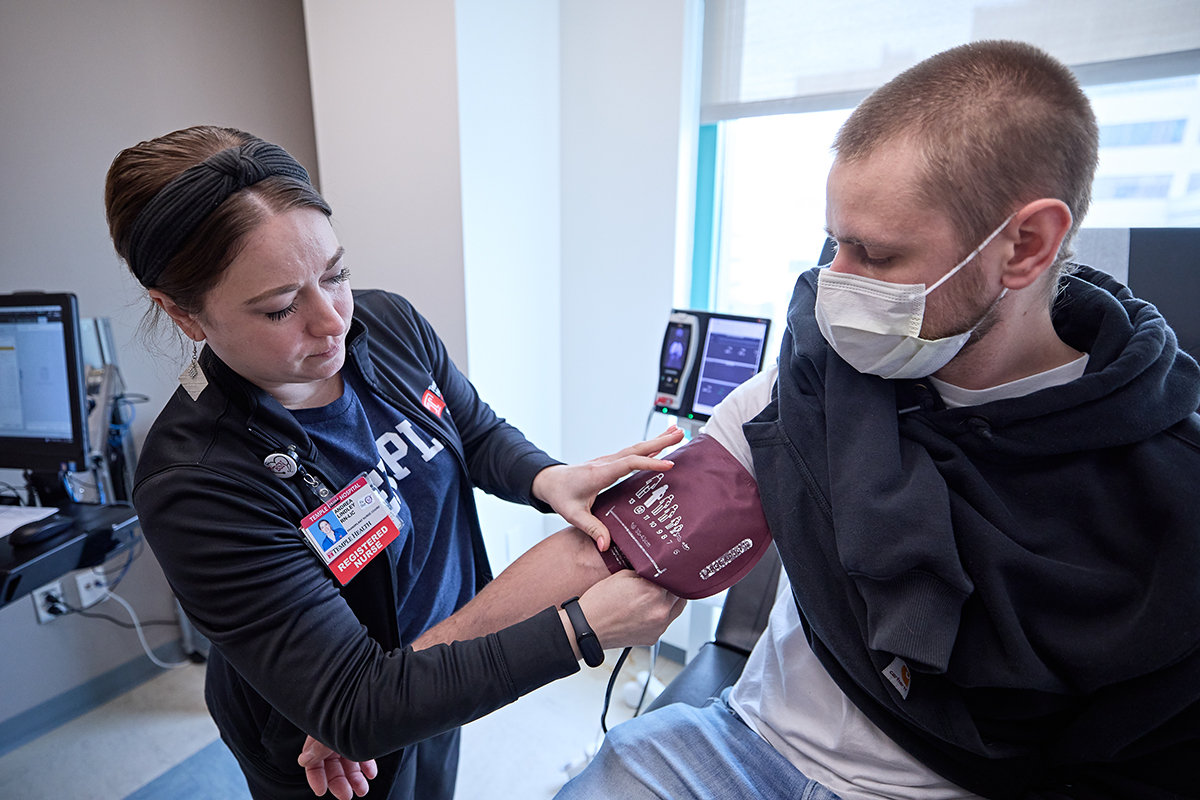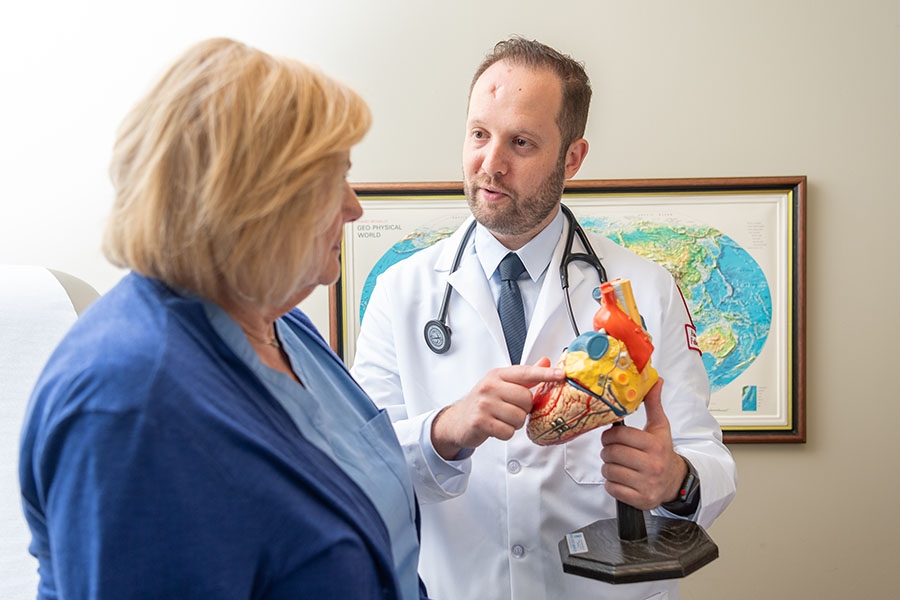
To diagnose heart failure, your doctor will review your medical history, perform a physical exam and review the results of blood tests. Other tests that your doctor will often use include:
- Chest X-ray is a non-invasive test that takes pictures of the heart and lungs; these can help the doctor determine if there’s a problem that is causing chest pain.
- Echocardiogram is a non-invasive test using ultrasound (sound waves) and a device called a transducer—which is placed on the surface of the chest—to create a moving picture of the heart. It shows the size and shape of the heart chambers, including any damage to the heart muscle.
- Electrocardiogram is a simple non-invasive test that can be done in the doctor’s office using small adhesive pads called electrodes that are placed on the arms, legs, and chest. These electrodes are connected to a machine that detects and prints out the heart's electrical impulses, giving a 10-second snapshot of what the heart is doing right at that moment.
- Heart catheterization is used to detect abnormalities of the heart valves, heart function and coronary arteries. This procedure uses a catheter (long, thin, flexible tube) that is inserted through a blood vessel in the wrist, leg, arm or neck to measure the pressure of blood in the heart chambers, take blood samples or view heart structures (using contrast dye).
- MRI uses radio waves and a powerful magnetic field to produce detailed images of internal structures.
- Other possible tests include: nuclear heart scan and special tests to check for coronary artery disease; valve disease; or heart arrhythmias.

